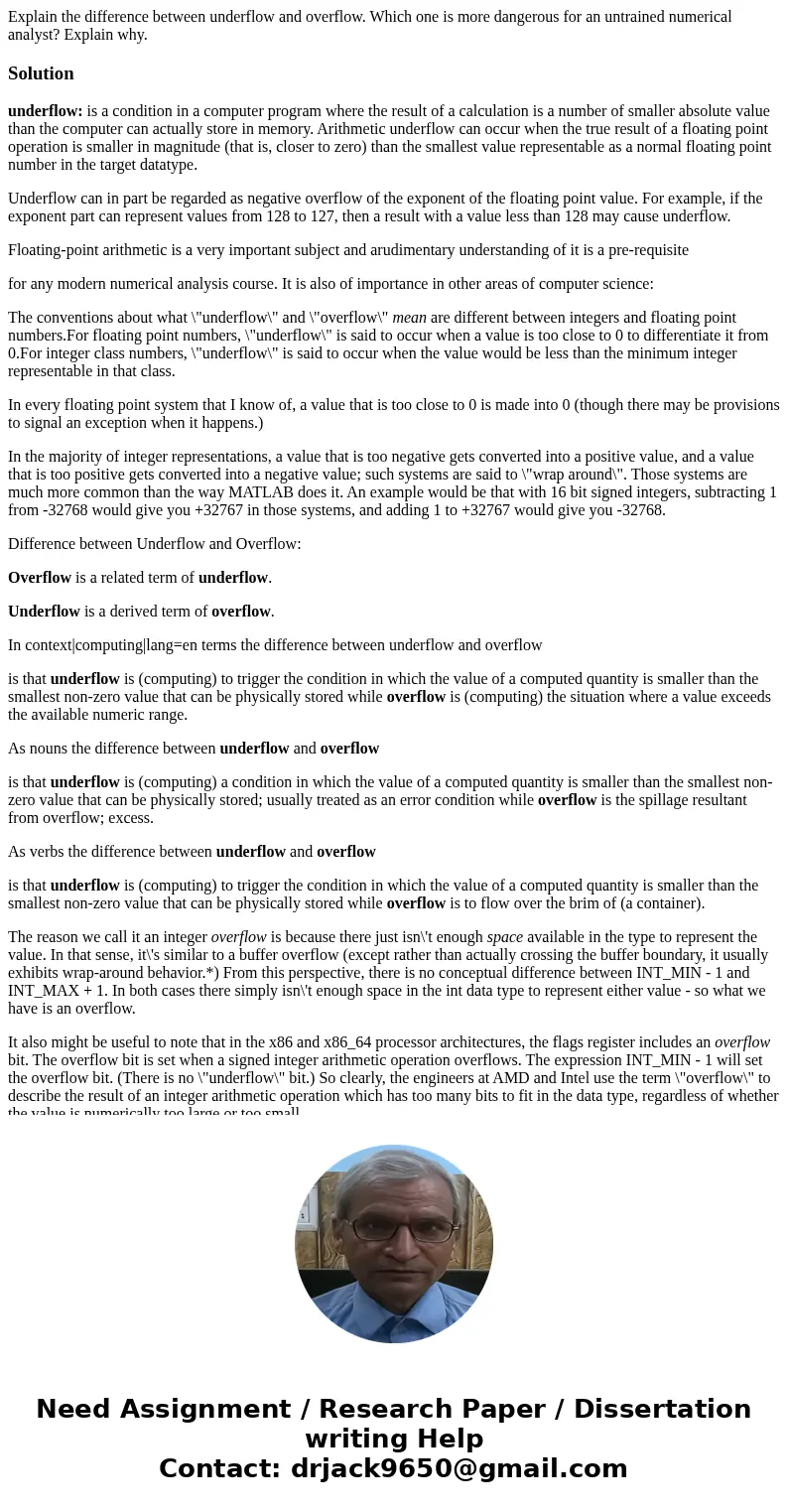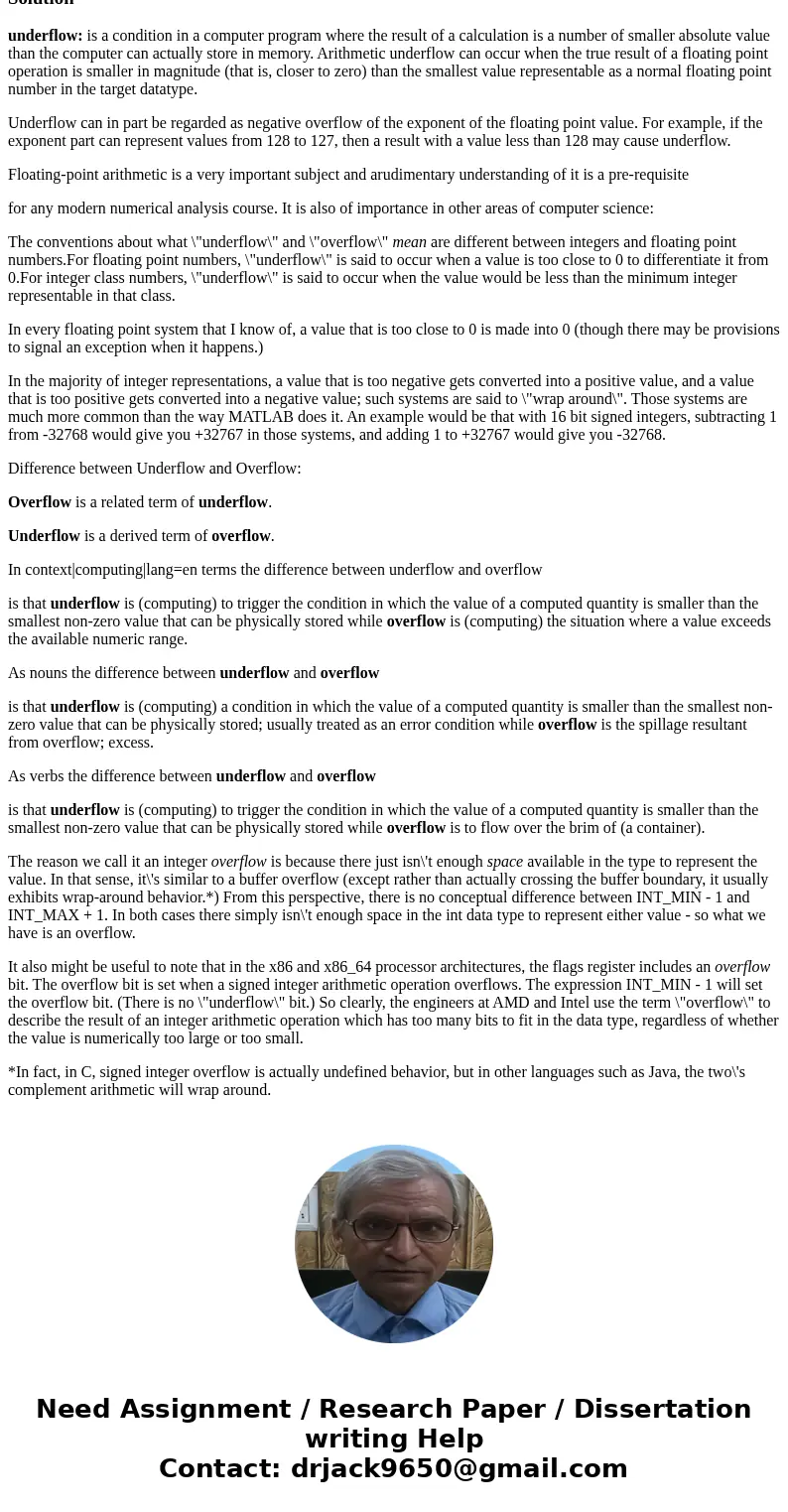Explain the difference between underflow and overflow Which
Solution
underflow: is a condition in a computer program where the result of a calculation is a number of smaller absolute value than the computer can actually store in memory. Arithmetic underflow can occur when the true result of a floating point operation is smaller in magnitude (that is, closer to zero) than the smallest value representable as a normal floating point number in the target datatype.
Underflow can in part be regarded as negative overflow of the exponent of the floating point value. For example, if the exponent part can represent values from 128 to 127, then a result with a value less than 128 may cause underflow.
Floating-point arithmetic is a very important subject and arudimentary understanding of it is a pre-requisite
for any modern numerical analysis course. It is also of importance in other areas of computer science:
The conventions about what \"underflow\" and \"overflow\" mean are different between integers and floating point numbers.For floating point numbers, \"underflow\" is said to occur when a value is too close to 0 to differentiate it from 0.For integer class numbers, \"underflow\" is said to occur when the value would be less than the minimum integer representable in that class.
In every floating point system that I know of, a value that is too close to 0 is made into 0 (though there may be provisions to signal an exception when it happens.)
In the majority of integer representations, a value that is too negative gets converted into a positive value, and a value that is too positive gets converted into a negative value; such systems are said to \"wrap around\". Those systems are much more common than the way MATLAB does it. An example would be that with 16 bit signed integers, subtracting 1 from -32768 would give you +32767 in those systems, and adding 1 to +32767 would give you -32768.
Difference between Underflow and Overflow:
Overflow is a related term of underflow.
Underflow is a derived term of overflow.
In context|computing|lang=en terms the difference between underflow and overflow
is that underflow is (computing) to trigger the condition in which the value of a computed quantity is smaller than the smallest non-zero value that can be physically stored while overflow is (computing) the situation where a value exceeds the available numeric range.
As nouns the difference between underflow and overflow
is that underflow is (computing) a condition in which the value of a computed quantity is smaller than the smallest non-zero value that can be physically stored; usually treated as an error condition while overflow is the spillage resultant from overflow; excess.
As verbs the difference between underflow and overflow
is that underflow is (computing) to trigger the condition in which the value of a computed quantity is smaller than the smallest non-zero value that can be physically stored while overflow is to flow over the brim of (a container).
The reason we call it an integer overflow is because there just isn\'t enough space available in the type to represent the value. In that sense, it\'s similar to a buffer overflow (except rather than actually crossing the buffer boundary, it usually exhibits wrap-around behavior.*) From this perspective, there is no conceptual difference between INT_MIN - 1 and INT_MAX + 1. In both cases there simply isn\'t enough space in the int data type to represent either value - so what we have is an overflow.
It also might be useful to note that in the x86 and x86_64 processor architectures, the flags register includes an overflow bit. The overflow bit is set when a signed integer arithmetic operation overflows. The expression INT_MIN - 1 will set the overflow bit. (There is no \"underflow\" bit.) So clearly, the engineers at AMD and Intel use the term \"overflow\" to describe the result of an integer arithmetic operation which has too many bits to fit in the data type, regardless of whether the value is numerically too large or too small.
*In fact, in C, signed integer overflow is actually undefined behavior, but in other languages such as Java, the two\'s complement arithmetic will wrap around.


 Homework Sourse
Homework Sourse